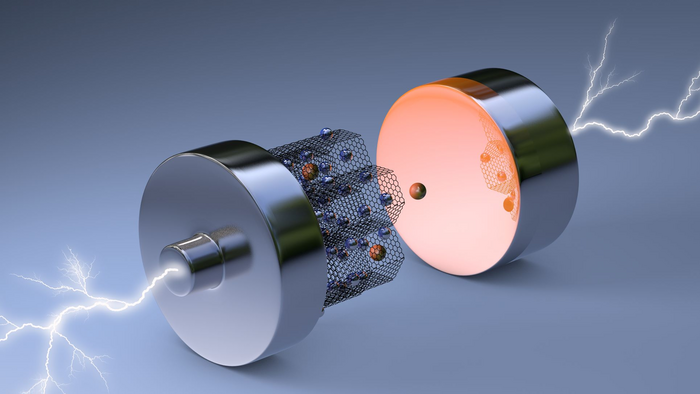Thick electrodes may allow for EV fast-charging, range increase

The result is an electrode that could potentially facilitate twice the range on a single charge for an electric vehicle, compared with a battery using an existing commercial electrode.
“Two-dimensional materials are commonly believed as a promising candidate for high-rate energy storage applications because it only needs to be several nanometers thick for rapid charge transport,” Guihua Yu, co-author of the study said in a media statement.
“However, for thick-electrode-design-based next-generation, high-energy batteries, the restacking of nanosheets as building blocks can cause significant bottlenecks in charge transport, leading to difficulty in achieving both high energy and fast charging.”

Yu explained that the key was to use thin two-dimensional materials as the building blocks of the electrode, stacking them to create thickness and then using a magnetic field to manipulate their orientations.
The research team also used commercially available magnets during the fabrication process to arrange the two-dimensional materials in a vertical alignment, creating a fast lane for ions to travel through the electrode.
According to Yu, typically, thicker electrodes force the ions to travel longer distances to move through the battery, which leads to slower charging time. The typical horizontal alignment of the layers of material that make up the electrode force the ions to snake back and forth.
“Our electrode shows superior electrochemical performance partially due to the high mechanical strength, high electrical conductivity, and facilitated lithium-ion transport thanks to the unique architecture we designed,” co-author Zhengyu Ju said.
In addition to comparing their electrode with a commercial electrode, they also fabricated a horizontally arranged electrode using the same materials for experimental control purposes. They were able to recharge the vertical thick electrode to 50% energy level in 30 minutes, compared with 2 hours and 30 minutes with the horizontal electrode.
The researchers emphasized they are early in their work in this area. They looked at just a single type of battery electrode in this research.
Their goal is, thus, to generalize their methodology of vertically organized electrode layers to apply it to different types of electrodes using other materials. This could help the technique become more widely adopted in industry, so it could enable future fast-charging yet high-energy batteries that power electric vehicles.
This post has been syndicated from a third-party source. View the original article here.




